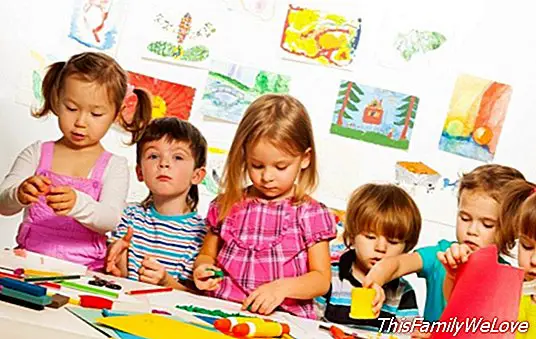Ideas to motivate creativity in the classroom

The biggest obstacle to working with creativity in the classroom is that it is difficult to develop it, not only as implicit in the expression of ideas through different artistic means, but in the way of thinking, of acting by putting all of its resources at stake. to arrive at a valid and creative solution of the problem, as explained by Dr. Howard Gardner, author of the theory of Multiple Intelligences in his work Art, mind and brain. A cognitive approach to creativity.
It is not that the children of today are not creative or develop little this magnificent ability, but that the stimulating situations in which to put it into practice are scarce; both in the school, with traditional methodologies in which to move away from the textbook can seem crazy, like at home, where most of the time we mark the way at all times, no matter how small the activity or, even in the game.
Ideas to motivate creativity in the classroom
In order to get students to become creatively intelligent, at the present time innovative methodological strategies coexist, applied properly in the classroom and, why not? At home, they can achieve this goal. This is the case of Project Work (TPP) linked to Gardner's theory of Multiple Intelligences, which is currently working on the Zero project. Their investigations speak of:
1. Explore how to teach for understanding. In other words, help students learn to use knowledge to solve unexpected problems, instead of simply reciting past events. One way to make this possible is the TPP, offering learning situations in the form of projects, in which the student has to put into practice all their resources, skills and intelligence.
2. Design strategies to create a "culture of thought" in the classroom that encourages students to think critically and creatively. Offering different ways to reach an objective, including creative ones, not only those academically considered as main ones, is also included in this new methodology.
The commitment of teachers with creativity
Teachers committed, more and more, we prepare to present our students situations as comprehension projects in which, setting curricular and interdisciplinary objectives, are the children themselves who have to design the necessary activities to carry it out. Thus, for example, the integrating task of designing and make a medieval street market in the teaching center. In this souk, products and articles made by the educational community for a solidary purpose would be sold. All the subjects would participate in the different stands of the time: scientific inventions, mathematicians of the time, music and dance of the Middle Ages, curious tools, games of wit, medieval calligraphy ...
For this, the facilities of the center should recreate a perfect and complete medieval setting. Likewise, design a wide and varied program of recreational and cultural activities, such as play the great chess final -material that is included in the curriculum- on a real size board made by them for the occasion, where the finalist students were the pieces of the game. The different stalls would be designed in which to acquire gifts, handicrafts, toys, soaps and candles, games of ingenuity and a good number of products of own elaboration, made in mathematics, language, natural sciences, plastic arts and music class.
Behind this model of methodological strategies lies a great teamwork of the students -participating tasks, mounting stands, etc. - according to their own abilities and intelligences; the mathematician would realize the study of space, the necessary planes; the linguist would be in charge of the pregones and the publicity, and thus until endless activities in which, the creativity would involve any curricular content.
In this same way, small comprehension projects can be worked from each subject; ¿why not paint a scale picture in Language class, to then describe it to the rest of the class with a poem or song? ¿Or design a mathematical problem related to the work of Platero and me? Even, from the subject of Knowledge of the Environment, prepare the next cultural output of the course: destination, academic objectives, management of tickets, budget for the center, free stops of interest in the area, calculation of the approximate time, excursion menu for propose to kitchen. an informative e-mail to the parents ... The possibilities are endless.
It is then when the teacher adopts the role of guide and mediator, in front of the students who take the initiative and become protagonists of their own learning process.
Sara María Lladó. Primary Coordinator of the Orvalle School (Madrid




